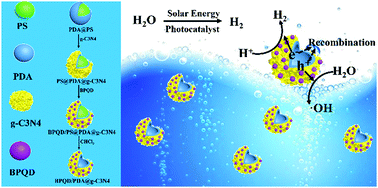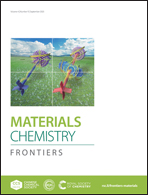Rational design of a hollow multilayer heterogeneous organic framework for photochemical applications†
Abstract
The self-assembly of hollow organic frameworks has been a focal point in nanotechnology for several decades. Herein, we emphasized a general and simple system to fabricate an arbitrary type of hollow multilayer heterogeneous organic framework. The hollow organic framework nanospheres comprising black phosphorus quantum dots (BPQD), carbon nitride, and polydopamine (PDA) (PDA@g-C3N4/BPQD) are fabricated using an electrostatic bonding method. Surprisingly, the self-assembly process of PDA@g-C3N4 is not completely in accordance with the law of charge interactions, only positively charged g-C3N4 and negatively charged PDA can self-assemble to obtain the desired structure. Furthermore, BPQD was further loaded onto the surface of PDA@g-C3N4 to increase light utilization and strengthen the charge separation in the photochemical process. Benefiting from the hierarchical structure and the hollow spherical morphology, the PDA@g-C3N4/BPQD shows a significant photocatalytic H2 production activity and the ability to generate reactive oxygen species (ROS) upon triggering with near infrared (NIR) light. This method provides a proof-of-concept of an organic framework with a precisely controlled morphology.



 Please wait while we load your content...
Please wait while we load your content...